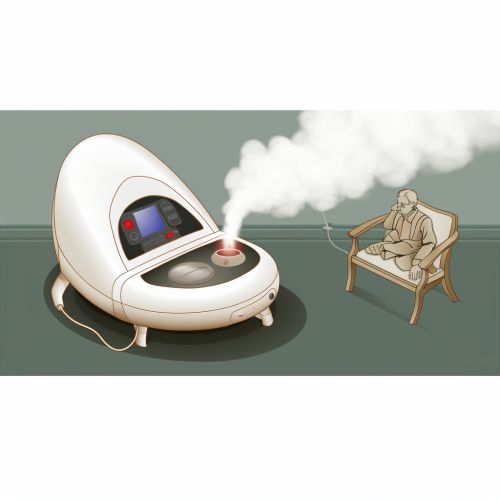Thermotherapy
Introduction
Thermotherapy is a type of physical therapy that involves the application of heat to the body for therapeutic purposes. The heat can be applied in various forms, such as hot water, hot packs, infrared heat, and more. This treatment method is used to alleviate pain, increase blood flow, relax muscles, and accelerate healing in various health conditions.


History
The use of heat for therapeutic purposes dates back to ancient civilizations. The ancient Egyptians, Greeks, and Romans used hot stones, sand, and water for healing purposes. In the 19th century, the development of electricity led to the invention of devices that could produce and control heat, making thermotherapy more accessible and widespread.
Types of Thermotherapy
There are several types of thermotherapy, each with its own specific applications and benefits.
Dry Heat Therapy
Dry heat therapy, also known as conducted heat therapy, involves the use of devices such as heating pads, dry heat wraps, and infrared heat lamps. This type of thermotherapy is often used to relieve muscle and joint pain, and to promote relaxation.
Moist Heat Therapy
Moist heat therapy, or convection heat therapy, involves the use of heated water or steam. This can be applied through hot baths, steam rooms, or moist heat packs. Moist heat penetrates deeper into the tissues than dry heat, making it more effective for relieving deep muscle pain and stiffness.
Diathermy
Diathermy is a form of thermotherapy that uses electromagnetic waves to generate heat within body tissues. There are three types of diathermy: shortwave, microwave, and ultrasound. Diathermy can reach deeper tissues than other forms of thermotherapy, and is often used in physical therapy and rehabilitation.
Mechanism of Action
The therapeutic effects of heat are primarily due to its ability to increase blood flow in the treated area. Heat causes blood vessels to dilate, which increases the amount of oxygen and nutrients delivered to the tissues. This can help to speed up the healing process, reduce inflammation, and alleviate pain.
In addition to increasing blood flow, heat also has a direct effect on the tissues themselves. It can help to relax tense muscles, increase flexibility, and reduce stiffness in the joints. Furthermore, heat can stimulate the sensory receptors in the skin, which can reduce the perception of pain.
Applications
Thermotherapy is used in a wide range of medical and therapeutic applications. It can be used to treat acute injuries, such as sprains and strains, as well as chronic conditions like arthritis and back pain. It is also used in physical therapy and rehabilitation to improve mobility and function in patients recovering from surgery or injury.
In addition to its physical benefits, thermotherapy can also have psychological benefits. The warmth and relaxation provided by heat therapy can help to reduce stress and anxiety, and promote overall well-being.
Risks and Precautions
While thermotherapy is generally safe, it is not suitable for everyone. People with certain medical conditions, such as heart disease, high blood pressure, or diabetes, should consult with their healthcare provider before using heat therapy. Additionally, heat should not be applied to areas with poor circulation, open wounds, or infected skin.
It is also important to use heat therapy correctly to avoid burns or other injuries. Heat should be applied in a controlled manner, and should not be used for prolonged periods of time. If heat therapy causes discomfort or pain, it should be discontinued immediately.
Conclusion
Thermotherapy is a versatile and effective treatment method that has been used for centuries to alleviate pain, promote healing, and improve physical function. While it is not without risks, when used correctly and under the guidance of a healthcare provider, it can be a beneficial addition to a comprehensive treatment plan.
